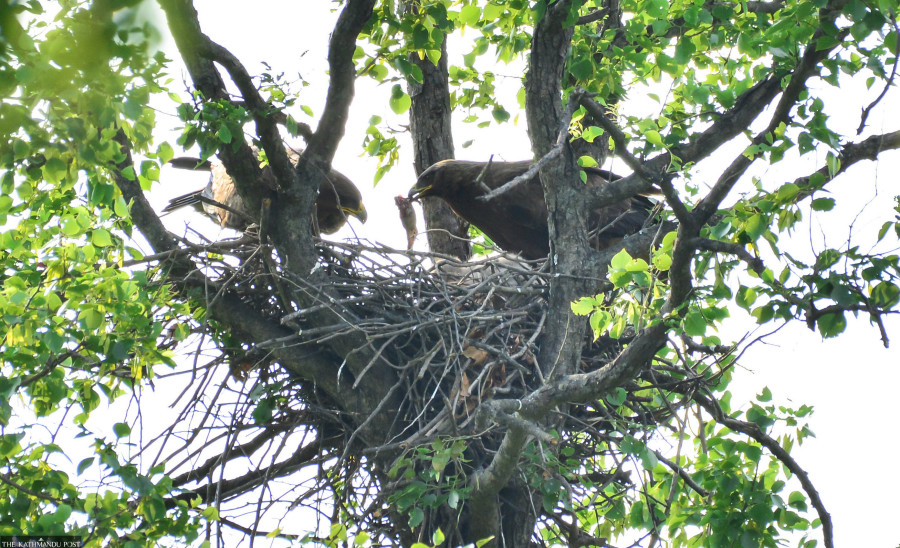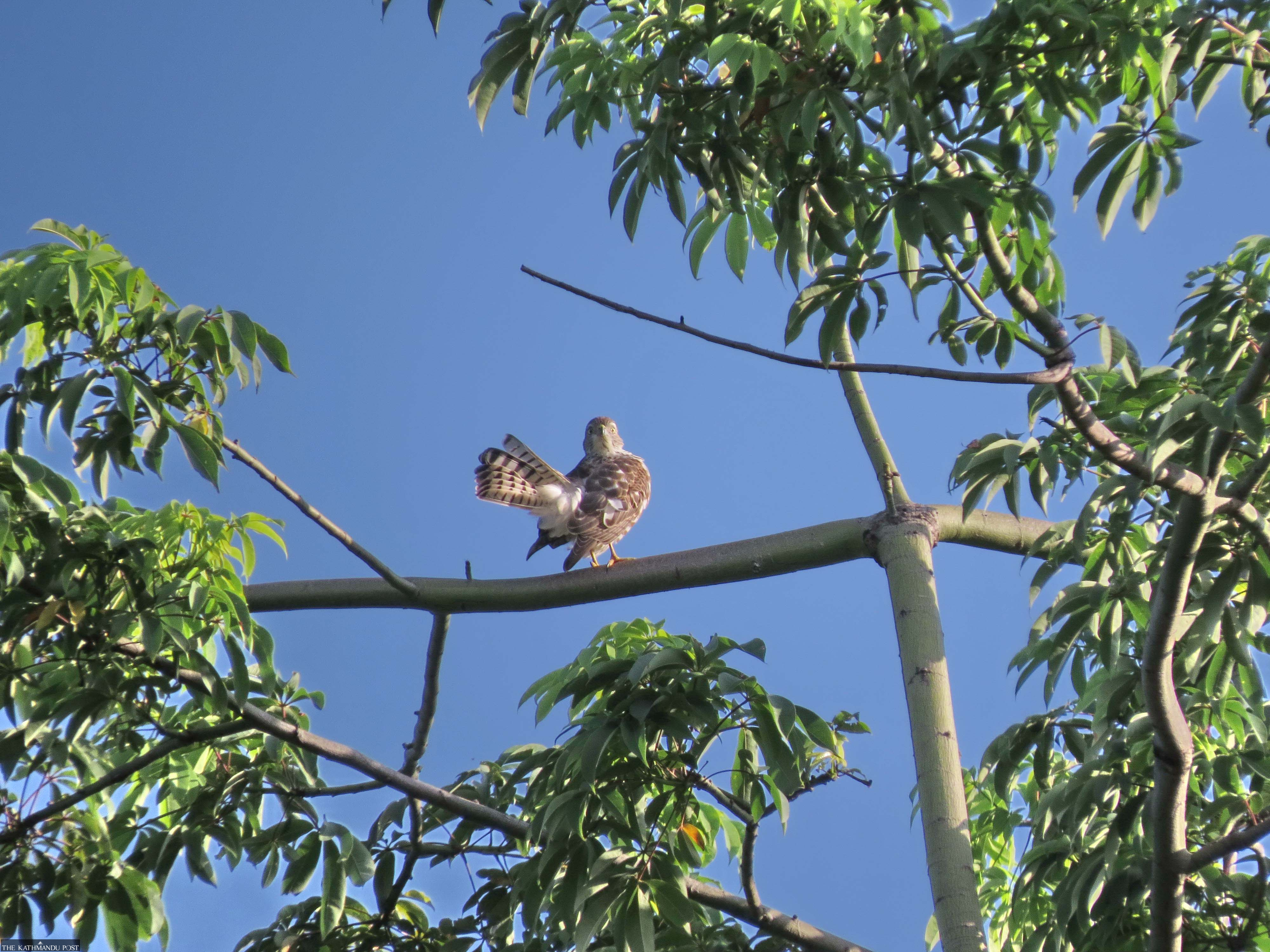National
Falling raptor numbers more than an ecological scare for Nepal
The loss due to haphazard urbanisation, shrinking wetlands and rampant pesticide use could hit tourist numbers.
Manoj Paudel
Chaiyan Kasorndorkhua, a professor at the Faculty of Veterinary Medicine at the Kasetsart University in Thailand, was amazed to see several species of raptors on his first visit to Nepal in 2015. He has since come back to Nepal four times to watch the birds of prey.
Chiyan was last in Nepal in 2021. In an e-mail interaction last month, he expressed his happiness when he saw the steppe eagles and Himalayan griffons in Thulakharka in Kaski on his last visit. “The sighting was quite unforgettable. The diversity of raptors in Nepal makes it a perfect destination for birding,” he said. “But I am also beginning to worry about the raptors’ decreasing population in Nepal over the past few years due to shrinking habitats and use of insecticides and pesticides in crops.”

Professor Toru Yamazaki, an ornithologist from Japan, has a similar experience. He used to visit Nepal every year accompanied by fellow ornithologists to watch the raptors until a few years ago. “My team and I have not visited Nepal for the past four years since the number of raptors has declined,” said Toru, who is also the Japan president of Asian Raptor Research Networks. “We could see 8–10 different species of raptors in Lumbini in a matter of a few minutes. I once saw a flock of raptors take flight together from such a close range. It was the highlight of my visit.”
According to DB Chaudhary, an ornithologist, around 10 percent of the total international tourists visit Nepal for birding.
Conservationists who have been studying the raptors are worried about their dwindling numbers in Nepal over the past few years. According to them, unmanaged urbanisation, shrinking wetland areas, rampant use of insecticide and pesticides in farmlands and a lack of food are the leading causes of the decline in the number of raptors in Nepal.

“The raptor population is decreasing due to the human encroachment, smuggling of the bird species, overfishing and electrocution caused by high tension lines as well,” said ornithologist Tulasi Subedi who did his PhD on the raptors. According to him, the birds of prey are quite helpful for farmers and keep the ecosystem balanced. “The decreasing number of raptors adversely affects farming, tourism and the environment,” asserts Subedi.
As many as 892 species of birds are found in Nepal. Among them, 83 species—60 diurnal and 23 nocturnal—are raptors. There are around 500 species of raptors in the world.
Subedi and Sandesh Gurung have been studying raptors in Nepal since 2012. According to them, most of them are migratory bird species. “Thulakharka of Annapurna Rural Municipality in Kaski district is the main destination of the migratory raptors. We conducted a census of around 33 major species of raptors,” said Subedi.

Subedi and Gurung have carried out the count of the raptors since 2012. According to their study report, a total of 13,485 raptors migrated to Nepal in 2013 while only 7,724 migratory raptors were reported in 2021.
The study conducted by Subedi and Gurung shows that electrocution while perching on the electricity poles or getting caught in the wires is one reason behind raptors’ deaths. Subedi and Gurung monitored a total of 1,108 electricity poles in Lumbini, Annapurna and Chitwan areas in 2020-21. “As many as eight birds, including two raptors, were found dead for every 100 electricity poles,” said Gurung.
According to the Peregrine Fund, an organisation working for raptor conservation, seven among 10 destinations for watching raptors in the world are in Nepal. Koshi Tappu Wildlife Reserve, Chitwan National Park, Bardiya National Park, Shuklaphanta National Park, Barandabhar forest and wetland area, Annapurna Conservation Area and Lumbini-Jagadishpur agricultural land and wetland are the major destinations to watch the birds of prey.

Of late, their numbers in Nepal are declining due to habitat loss caused by deforestation, wildfires, urbanisation and smuggling. The Peregrine Fund mentions that the raptor population has been decreasing in six destinations in Nepal except in Lumbini-Jagadishpur agricultural land and wetland.
The Lumbini-Jagadishpur, according to conservationists, is a haven for the raptors. “Of total 60 diurnal raptor species found in Nepal 45 species are found in the Lumbini area. Around 75 percent of raptors can be sighted in Lumbini,” said Hem Sagar Baral, a senior ornithologist. In his book named Lumbini Landscape, Baral claims that out of the around 500 species found worldwide, 19 raptor species can be found in the Lumbini area.
Most of the raptors are hunters while some are scavengers as well. They eat rats, smaller birds, snakes, frogs, fish, lizards, rabbits, squirrels, ducks, and insects among others. The raptors have a hooked beak, good eyesight and sharp talons.




 7.12°C Kathmandu
7.12°C Kathmandu



%20(1).jpg&w=200&height=120)











